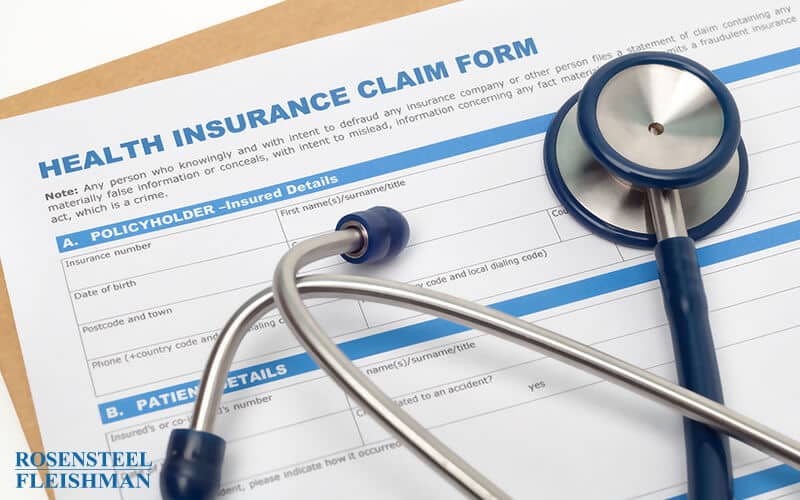Navigating the aftermath of an accident or injury is never easy. The physical pain, coupled with the emotional stress and uncertainty about the future, can leave you feeling overwhelmed and alone. But here's the thing: you're not alone. In Charlotte, NC, there are professionals who are not just seasoned in the field of personal injury […]

Noneconomic Damages Cap in Medical Malpractice Action in North Carolina
In 2011, the North Carolina legislature enacted tort reform for medical liability. Part of this tort reform limited the amount of damages a plaintiff can receive for noneconomic damages to $500,000. G.S. 90-21.19(a) contains the relevant statute and states that
Except as otherwise provided in subsection (b) of this section, in any medical malpractice action in which the plaintiff is entitled to an award of noneconomic damages, the total amount of noneconomic damages for which judgment is entered against all defendants shall not exceed five hundred thousand dollars ($500,000). Judgment shall not be entered against any defendant for noneconomic damages in excess of five hundred thousand dollars ($500,000) for all claims brought by all parties arising out of the same professional services. On January 1 of every third year, beginning with January 1, 2014, the Administrative Office of the Courts shall reset the limitation on damages for noneconomic loss set forth in this subsection to be equal to five hundred thousand dollars ($500,000) times the ratio of the Consumer Price Index for November of the prior year to the Consumer Price Index for November 2011. The Administrative Office of the Courts shall inform the Revisor of Statutes of the reset limitation. The Revisor of Statutes shall publish this reset limitation as an editor's note to this section. In the event that any verdict or award of noneconomic damages stated pursuant to G.S. 90-21.19B exceeds these limits, the court shall modify the judgment as necessary to conform to the requirements of this subsection.
The tort reform doesn’t limit the amount that a plaintiff can receive for medical bills but for “noneconomic damages,” which G.S. 20-19(c)(2) defines as “Damages to compensate for pain, suffering, emotional distress, loss of consortium, inconvenience, and any other nonpecuniary compensatory damage. "Noneconomic damages" does not include punitive damages as defined in G.S. 1D-5.” Subsection (3) defines “same professional services” as “The transactions, occurrences, or series of transactions or occurrences alleged to have caused injury to the health care provider's patient.”
There is an exception to this cap on noneconomic damages. G.S. 90-21.19(b) states that
Notwithstanding subsection (a) of this section, there shall be no limit on the amount of noneconomic damages for which judgment may be entered against a defendant if the trier of fact finds both of the following:
(1) The plaintiff suffered disfigurement, loss of use of part of the body, permanent injury or death.
(2) The defendant's acts or failures, which are the proximate cause of the plaintiff's injuries, were committed in reckless disregard of the rights of others, grossly negligent, fraudulent, intentional or with malice.
What does this statute mean practically? First, we can look to the jury instructions relevant to this exception found in N.C.P.I. Civil 809.160. When this issue comes up in a trial, the judge should instruct the jury to first determine first “that the acts or failures of the defendant for which you already have awarded relief caused as one of its consequences disfigurement, loss of use of part of the body, or permanent injury or proximately caused the death of the plaintiff.” In a wrongful death suit, this element would be satisfied. The jury instructions provide further guidance about what these terms mean:
an injury is permanent when any of its effects will continue throughout the plaintiff's life. These effects may include medical expenses, loss of earnings, pain and suffering, scarring or disfigurement, (partial) loss (of use) of part of the body, or (state any other element of damages supported by the evidence) to be incurred or experienced by the plaintiff over his life expectancy.
The judge should then instruct the jury to determine that “the defendant’s conduct that produced the injury was grossly negligent, committed in reckless disregard of the rights of others, fraudulent, intentional. or committed with malice.” The jury instructions provide explanations for these terms as follows:
An act is grossly negligent when the defendant lacks even slight care, when he shows indifference to the rights and welfare of others or when his negligence is of an aggravated character.
To find that an act was committed in reckless disregard for the rights and safety of others, you must find more than mere failure to exercise ordinary care. You must find that the defendant acted needlessly, manifesting a reckless indifference to others.
Fraud means a false representation of material fact made by the defendant with intent to deceive which was reasonably calculated to deceive and which did, in fact, deceive and damage the plaintiff because of his reasonable reliance on it.
Conduct is intentional if the defendant intentionally fails to carry out some duty imposed by law which is necessary to protect the safety of the person or property to which it is owed.
Malice means a sense of personal ill will toward the plaintiff that activated or incited the defendant to perform the act or undertake the conduct that resulted in harm to the plaintiff.
Since the tort reform law is relatively new, there is little direct caselaw dealing with it. We can look to other cases which interpret the terms in the statute. The jury instruction cites the 1993 case Cowan v. Brian Center Management Corp. for its explanation of the term gross negligence. In Cowan, the court noted that often gross negligence and willful and wanton conduct have been used interchangeably. The court held that they were, in fact, not the same and that “gross negligence is "something less than willful and wanton conduct," and includes "the absence of even slight care," "indifference to the rights and welfare of others," and "negligence of an aggravated character."” This distinction also is noted in the current punitive damages statute G.S. 1D-5(7) which defines willful or wanton conduct as “more than gross negligence.”
The court in Cowan determined that an issue of material fact as to whether gross negligence existed in this case where “the experts disagree on what would have been the proper course of treatment for [the patient], and also disagree over whether gross negligence was involved.”
For an application of gross negligence, we can also look to the case Green v. Kearney (2011) which applied the term in the context of volunteer emergency medical care. In that case, the court “stressed the knowledge of the emergency personnel and their actions which were not in accord with that knowledge.” Where the issue was the defendant’s lack of knowledge, “even if their lack of knowledge was caused by a negligent failure to conduct a sufficiently thorough examination,” this was still only ordinary negligence.
Another place to look for the application of these terms is in punitive damages cases. An award of punitive damages requires a plaintiff to show the existence of either fraud, malice or willful or wanton conduct. In the 1983 case, Mazza v. Huffaker, a psychiatrist had sexual relations with his patient’s wife and the patient discovered the psychiatrist and his wife in bed together. The court held that this not only violated the standard of care a psychiatrist owed his patient but also was a “willful act” and “more than mere inadvertence on the part of the psychiatrist.” The psychiatrist “acted with conscious disregard of the mental well-being of” the patient.
In punitive damages cases, the timing of the intentional act or misconduct of the defendant is also important. In two cases in which doctors altered their medical records to hide their negligence (Paris v. Michael Kreitz, Jr., PA (1985) and Azzolino v. Dingfelder (1984)), this misconduct did not support the award of punitive damages because the act did not occur at the time of the injury. The court in Azzolino explained that the intentional act of the defendant “did not accompany the tortious conduct which caused plaintiffs' injury as required in order to sustain such a claim.”
If you have been injured from medical negligence, contact an attorney at Rosensteel Fleishman Car Accident & Injury Lawyers (704) 714-1450 to discuss your options.
Additional Medical Malpractice Articles
When it feels like your world has been turned upside down after an accident, finding the right support can make all the difference. It's not just about legal advice; it's about finding someone who genuinely cares about your recovery and your rights. In Charlotte, NC, the search for a medical malpractice lawyer near you or […]
Expecting a child, and the birth of that child is an exciting time for parents. Unfortunately, things can go wrong during pregnancy and birth. It is estimated that 7 out of every 1,000 babies born each year will suffer a birth injury. Depending on the injury and circumstances surrounding the injury, there may be liability […]
When you or someone close faces the distressing aftermath of an accident, understanding the next step can often be overwhelming. The maze of legal procedures, documentation, and decisions can sometimes feel as if you're trying to find your way in the dark. But what if you had a reliable guide by your side? Someone local, […]
